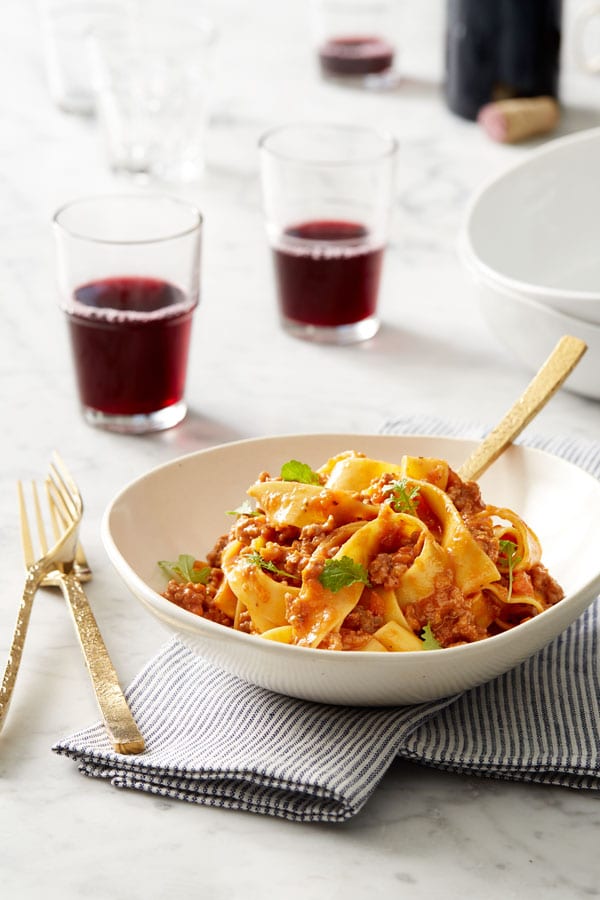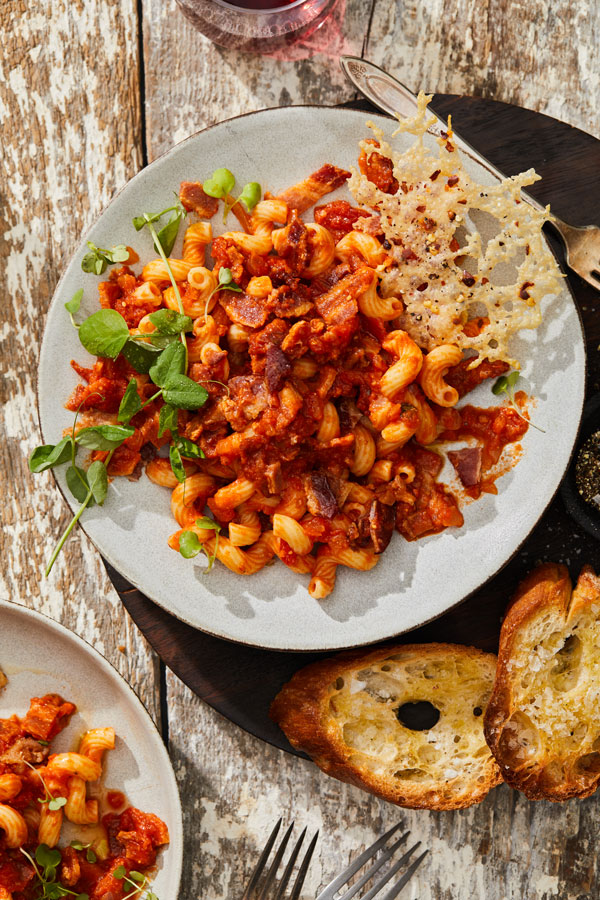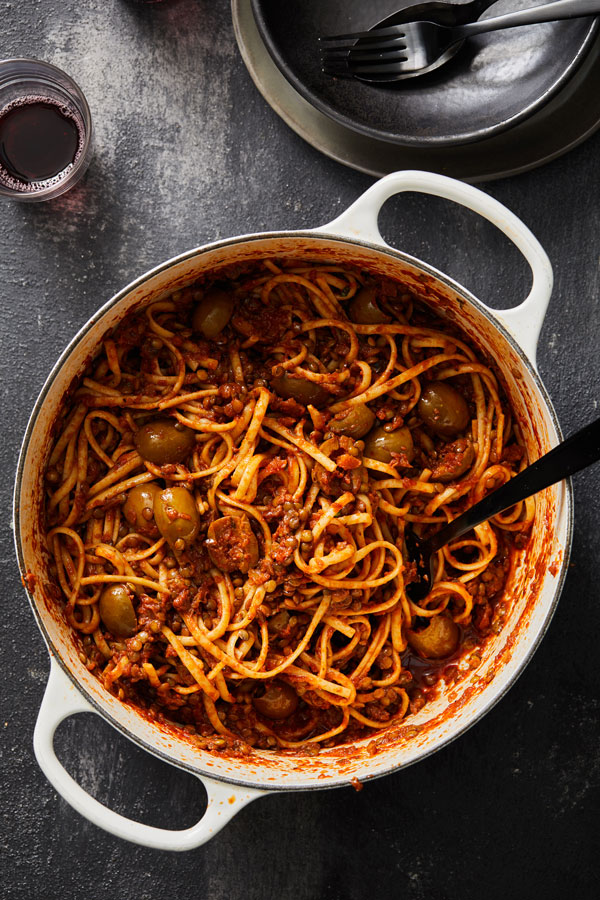Pappardelle Bolognese
Rich and meaty, the ultimate comfort food, Bolognese sauce is served best with wide ribbons of eggy pappardelle and grated Parmigiano-Reggiano. Great to always have a container on hand in the freezer so you can whip up a batch of lasagna for the crew at a moment’s notice.






